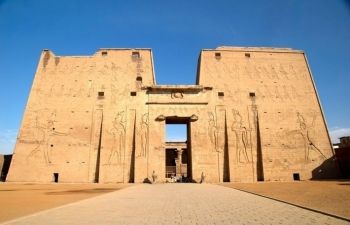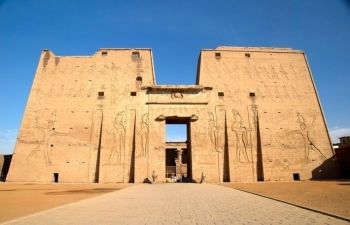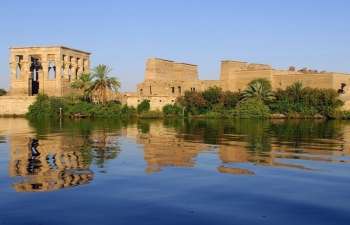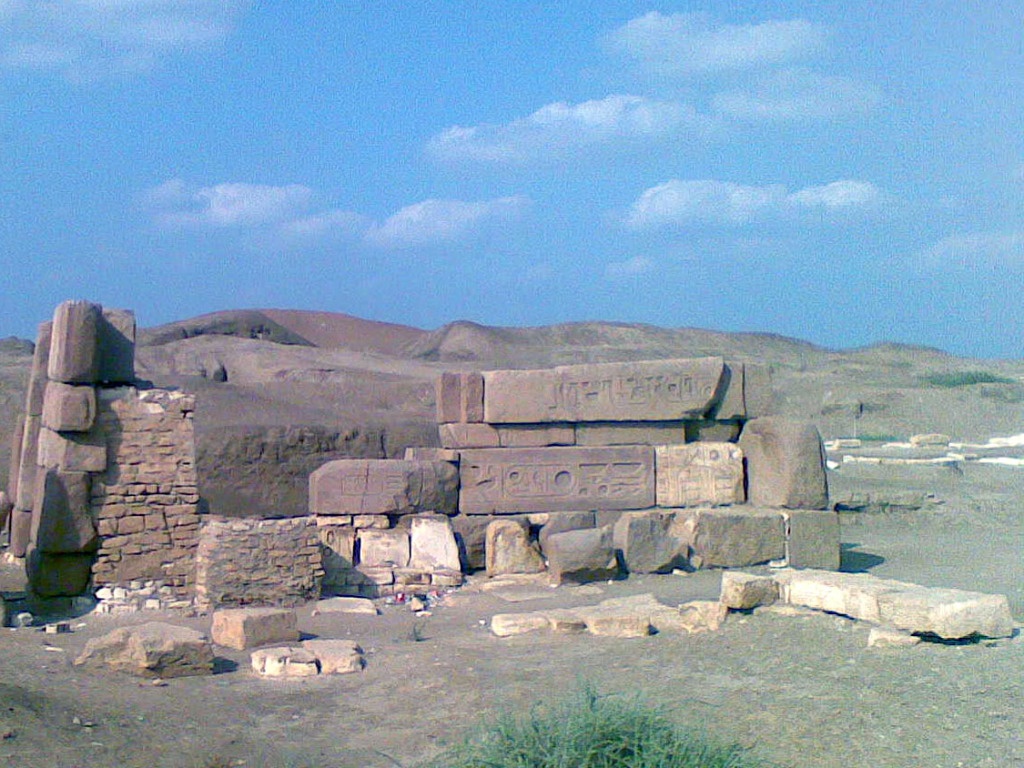Tanis Egypte
Tanis is een van de belangrijkste archeologische vindplaatsen in de Noordoostelijke Delta van Egypte.Bezoek de koninklijke graven van koningen uit zowel de 21e als de 22e dynastie die werden begraven in het tempelgebied van Tanis
Tanis Egypte
The Name of Tanis
Known to the ancient Egyptians as Djanet, the city served as the capital to the 21st and 22nd Egyptian dynasties thanks to its strength as a commercial center.
Excavation History in Tanis
.
The Principal Excavation at Tanis
was carried out in 1860 by August Mariette and in 1883 by Flinders
Since 1929 a French expedition led by Pierre Montet was digging in Tanis
(San el-Hagar). In addition to other significant discoveries, the excavator had previously discovered a group of royal tombs from around 1800 BC in Byblos. Exposed. In order to gain further knowledge about the relations between the Middle East and Egypt, Montet turned to an excavation site in the northeast of the Nile Delta, the 400 hectare settlement hill of Tanis
.
At the beginning of 1939, Pierre Montet made two sensational discoveries in quick succession in the 11 excavation campaigns. These were the tombs of King Osorkon II from the 22nd dynasty and that of King Psusennes I, the 3rd king of the 21st dynasty. These tombs were located together with other royal tombs of the 22nd dynasty in the south-west corner of the local temple district within the temple walls that King Psusennes I had built. When examining the ruins of houses on the edge of the temple area, one unexpectedly came across the royal necropolis of the 21./22. Dynasty encountered
Pierre Montet, who had been digging in San el-Hagar, the Greek Tanis
, since 1929, made two sensational discoveries in quick succession in the 11th excavation campaign in early 1939. These were the tombs of King Osorkon II from the 22nd dynasty and King Psusennes I, the third king of the 21st dynasty. The complex of the Psusennes I grave complex was 20 x 12 m in size and consisted of five rooms and a vestibule. It hid the burials of several kings and dignitaries.
These tombs were located together with other royal tombs of the 21st and 22nd dynasties in the southwest corner of the local temple district (in a corner of the small mother temple), still within the large temple wall that King Psusennes I had built. During the investigation of the ruins of houses on the edge of the temple area, one unexpectedly came across the royal necropolis of the 21st / 22nd dynasty. First large stone slabs came to light, forming a kind of extensive pavement. However, what looked like a plaster at first was actually the covering of the King's tomb
Osorkons II On 02/29 In 1939 Montet went into the grave of King Osorkon II, which unfortunately turned out to be robbed. After that, the work was stopped here because another untouched royal grave had meanwhile been discovered in the immediate vicinity. The workers here had been busy for two weeks uncovering a 19 x 12 m area of stone beams that formed the roof of another grave building. The joints in the roof were carefully filled with a kind of cement. There was not the slightest trace of forceful entry into the grave. The height of the tomb was about 5 meters. It consisted of a central building made of granite, the blocks of which were carefully put together and held by bronze dovetails, and a limestone structure surrounding it. Two of the deck blocks were removed to allow access to the interior, revealing a blocked shaft that took a day to clear On March 18, 1939, Montet descended into the entrance shaft and on March 19, 1939 entered the antechamber of the grave via a short, low corridor. The entrance shaft VI. to antechamber III. was originally walled up, it took a day to clear it. From the threshold of the antechamber he saw a silver sarcophagus with a falcon's head: "Through a crack you could see it flashing gold inside." Despite the tightness of the room, it was full of precious treasures. All kinds of objects were scattered on the floor: intestinal jars (canopic jars), statues, bronze devices ...... In front of the passage to the 4m x 2m large antechamber was a dog mummy, perhaps the king's favorite dog? To his surprise, Pierre Montet found hieroglyphic inscriptions on the grave walls in which the king names Psusennes (Aa-xpr-Ra = Aa-Cheper-Re) and Amenemope appeared, as well as depictions of processions of gods. The gods, twenty-two in number, walk behind Osiris on one side and behind the ba, the soul of the deceased, on the other. This wall motif is nothing more than a copy of the reliefs on the rose granite sarcophagus that originally belonged to Merenptah. In terms of quality, these limestone reliefs are quite remarkable. In two pageants, a total of 22 deities were seen approaching each other, including Horus and Nephthys, Neith, Thot, Selkis, Sobet and Bastet. The wall decorations consist mainly of copies and texts from the New Kingdom. In the antechamber there was also a relief of a special demon who holds a knife in each hand. Montet's astonishment is even greater when he perceives the contents of this burial chamber. On the right side of the antechamber was a kind of stone pedestal on which a falcon-headed silver coffin lay in the middle, which appeared to be completely intact. Through a crack Montet could see gold shimmering inside him. Montet wrote in his diary: "The coffin lid appeared to be decorated, but the dust, debris and pieces of plaster that had fallen from the ceiling revealed no details". After his two companions, Fougerousse and Georges Goyon, had also made a picture of the new discovery, Montet said that they had now reached Psusennes, the Tanite king. To protect the grave, the wall was closed again and Fougerousse commissioned a blacksmith from the village to install an iron door at the entrance to the grave. In addition, Montet asked the head of the Egyptian security police to deploy a detachment of soldiers, "... so that the grave and our crew are guarded day and night." When the coffin was opened on March 21, 1939 in the presence of King Farouk, Montet noticed to his great astonishment that the cartouche on the mummy did not match the name Psusennes I, which was all over the walls of the burial chamber. Who was this unknown king who was buried in the silver coffin and placed in the tomb of Psusennes? The coffin belonged to an unknown king, whose name was Heka-Cheper-Re Shoshenq, who was buried a century later in the antechamber of King Psusennes' tomb. The mummy itself had crumbled to the skeleton due to the high humidity in the grave. The bitumen that had once surrounded them was now a blackish mass. The jewelry found on the corpse was in excellent condition. The finds were recovered step by step and Montet personally brought them to the museum in Cairo on April 6, 1939. In Tanis , a final examination of the antechamber led to the discovery of another door
Osorkons II On 02/29 In 1939 Montet went into the grave of King Osorkon II, which unfortunately turned out to be robbed. After that, the work was stopped here because another untouched royal grave had meanwhile been discovered in the immediate vicinity. The workers here had been busy for two weeks uncovering a 19 x 12 m area of stone beams that formed the roof of another grave building. The joints in the roof were carefully filled with a kind of cement. There was not the slightest trace of forceful entry into the grave. The height of the tomb was about 5 meters. It consisted of a central building made of granite, the blocks of which were carefully put together and held by bronze dovetails, and a limestone structure surrounding it. Two of the deck blocks were removed to allow access to the interior, revealing a blocked shaft that took a day to clear On March 18, 1939, Montet descended into the entrance shaft and on March 19, 1939 entered the antechamber of the grave via a short, low corridor. The entrance shaft VI. to antechamber III. was originally walled up, it took a day to clear it. From the threshold of the antechamber he saw a silver sarcophagus with a falcon's head: "Through a crack you could see it flashing gold inside." Despite the tightness of the room, it was full of precious treasures. All kinds of objects were scattered on the floor: intestinal jars (canopic jars), statues, bronze devices ...... In front of the passage to the 4m x 2m large antechamber was a dog mummy, perhaps the king's favorite dog? To his surprise, Pierre Montet found hieroglyphic inscriptions on the grave walls in which the king names Psusennes (Aa-xpr-Ra = Aa-Cheper-Re) and Amenemope appeared, as well as depictions of processions of gods. The gods, twenty-two in number, walk behind Osiris on one side and behind the ba, the soul of the deceased, on the other. This wall motif is nothing more than a copy of the reliefs on the rose granite sarcophagus that originally belonged to Merenptah. In terms of quality, these limestone reliefs are quite remarkable. In two pageants, a total of 22 deities were seen approaching each other, including Horus and Nephthys, Neith, Thot, Selkis, Sobet and Bastet. The wall decorations consist mainly of copies and texts from the New Kingdom. In the antechamber there was also a relief of a special demon who holds a knife in each hand. Montet's astonishment is even greater when he perceives the contents of this burial chamber. On the right side of the antechamber was a kind of stone pedestal on which a falcon-headed silver coffin lay in the middle, which appeared to be completely intact. Through a crack Montet could see gold shimmering inside him. Montet wrote in his diary: "The coffin lid appeared to be decorated, but the dust, debris and pieces of plaster that had fallen from the ceiling revealed no details". After his two companions, Fougerousse and Georges Goyon, had also made a picture of the new discovery, Montet said that they had now reached Psusennes, the Tanite king. To protect the grave, the wall was closed again and Fougerousse commissioned a blacksmith from the village to install an iron door at the entrance to the grave. In addition, Montet asked the head of the Egyptian security police to deploy a detachment of soldiers, "... so that the grave and our crew are guarded day and night." When the coffin was opened on March 21, 1939 in the presence of King Farouk, Montet noticed to his great astonishment that the cartouche on the mummy did not match the name Psusennes I, which was all over the walls of the burial chamber. Who was this unknown king who was buried in the silver coffin and placed in the tomb of Psusennes? The coffin belonged to an unknown king, whose name was Heka-Cheper-Re Shoshenq, who was buried a century later in the antechamber of King Psusennes' tomb. The mummy itself had crumbled to the skeleton due to the high humidity in the grave. The bitumen that had once surrounded them was now a blackish mass. The jewelry found on the corpse was in excellent condition. The finds were recovered step by step and Montet personally brought them to the museum in Cairo on April 6, 1939. In Tanis , a final examination of the antechamber led to the discovery of another door






